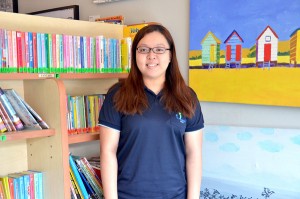Why Singapore’s English Teachers Should Embrace Singlish, Not Fight It
Is it time for Singaporean educators to embrace Singlish as a legitimate learning tool? What the Research […]
Read More
Pathlight School’s mission sends out a clear message of inclusiveness, to “maximize the potential of every student in both academics and life skills”. One teacher shares the kind of support the school provides its students to prepare them for life.
As Singapore’s first autism-focused school, Pathlight School offers a blend of mainstream academic curriculum and life-readiness skills. It caters to students with autism and other related disorders who are cognitively able to access mainstream academic curriculum but need a higher level of support and structure.
“Students are given opportunities to learn and adapt socially,” Pathlight educator Ms Stella Yap shares. “We provide varying levels of support to cater to their learning profiles and help them through their Primary School Leaving Examinations and GCE O- and N-Level Examinations.”
A typical class size in Pathlight is 12 students, supported by two teachers in every classroom. Some classes may be smaller if students’ autism needs are higher, with a third teacher if necessary.
“We focus very much on quality educational outcomes. With appropriate support in place, students are able to learn better in classrooms and in the process, maximize their potential.”
Pathlight School’s mission is “To provide a transformational learning journey and maximize the potential of every student in both academics and life skills.”
The school believes strongly in their students and strives to uncover their hidden potential – one that even their parents might not know of.
One way the teachers do this is during “Choice Time”, which happens in between classes. “Before the start of the next lesson, students are occupied while waiting,” Stella shares. “They can draw, read or do something they like.”
During Choice Time, teachers look out for students who display signs of potential. “I observed one of my students during Choice Time. He drew by combining two animals together and even combined the names,” Stella says. “There are a lot of interesting things to observe during ‘Choice Time’. When we spot any students who have a ‘talent’, we will flag their work out to see if they are suitable for the Artist Development Programme (ADP).”
The ADP is one of the school’s signature talent development programmes to uncover and nurture students who show exceptional talent in art.
“There are quite a number of students who can draw really well here!” Stella says. “Artists in the ADP are mentored by professional artists and given opportunities to be involved in public exhibition where they learn to promote their art to the general public.”
“The school is always in search of opportunities to allow students a chance to build their confidence by displaying their abilities,” she adds.

For example, the art piece of the ornate Tanglin gates at the Singapore Botanic Gardens that President Dr Tony Tan presented to China’s President Xi Jin Ping during his state visit was created by Glenn Phua, an ADP artist.
In celebration of SG50, 50 pieces of transport-theme artwork drawn by Pathlight students were displayed island-wide in SMRT stations and interchanges in a collaboration between Pathlight School and SMRT.
In helping students integrate into the real world after they graduate, teachers in Pathlight seize every teachable moment and infuse social or other valuable daily skills.
They have rules called the Big Four: No hurting self; no hurting others; no inappropriate touches; and no damaging of property.
“These are part of our school rules, which are linked to laws outside school. They act as a ‘bridge’ to society so our students are taught explicitly what is right and what is wrong and the consequences if they break the “Big Four Rules”. This helps them to draw the connections about why these rules are put in place.”
Similar to Pathlight’s mission, Stella hopes her students will be independent in the future, so that they will excel in both academics and life skills.
“Personally, I think my aspiration is the same as any other teacher,” she says. “I hope they are independent in the future. I hope they will have a good social life, a career of their choice, a confident individual who is accepted by and who will be able to contribute to society.”
And teachers can help them achieve that if they never give up, she advises.
“Every day is different – one day your strategies might work; another day, it might not. Consistency and expectations are very important. That’s what I have learned. We need to be positive and encourage our students constantly. I have noticed that they try to live up to their teachers’ expectations.”
Her advice to fellow educators is this: “Have an open mind, learn from other experienced teachers, and always be willing to grow.”